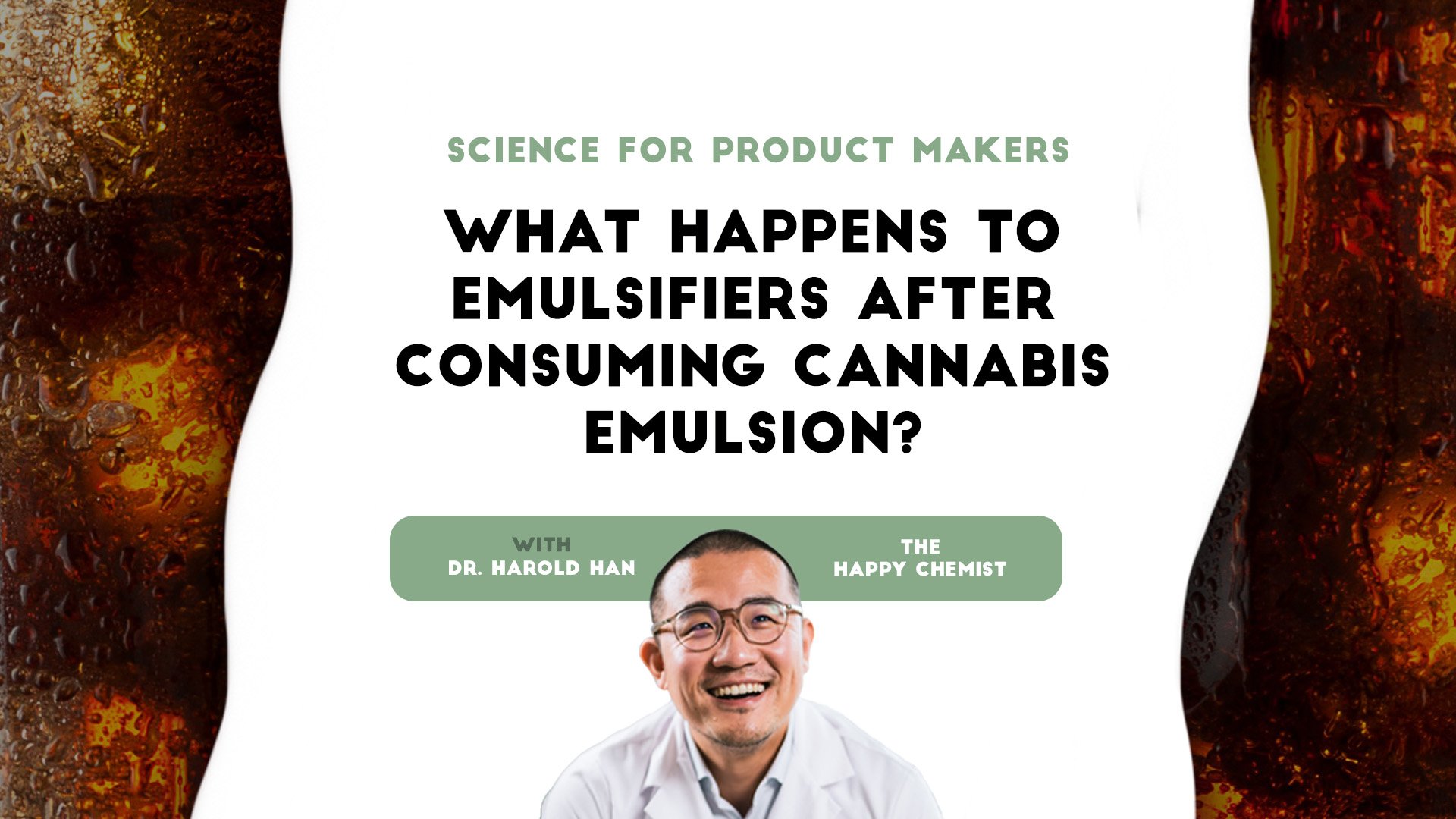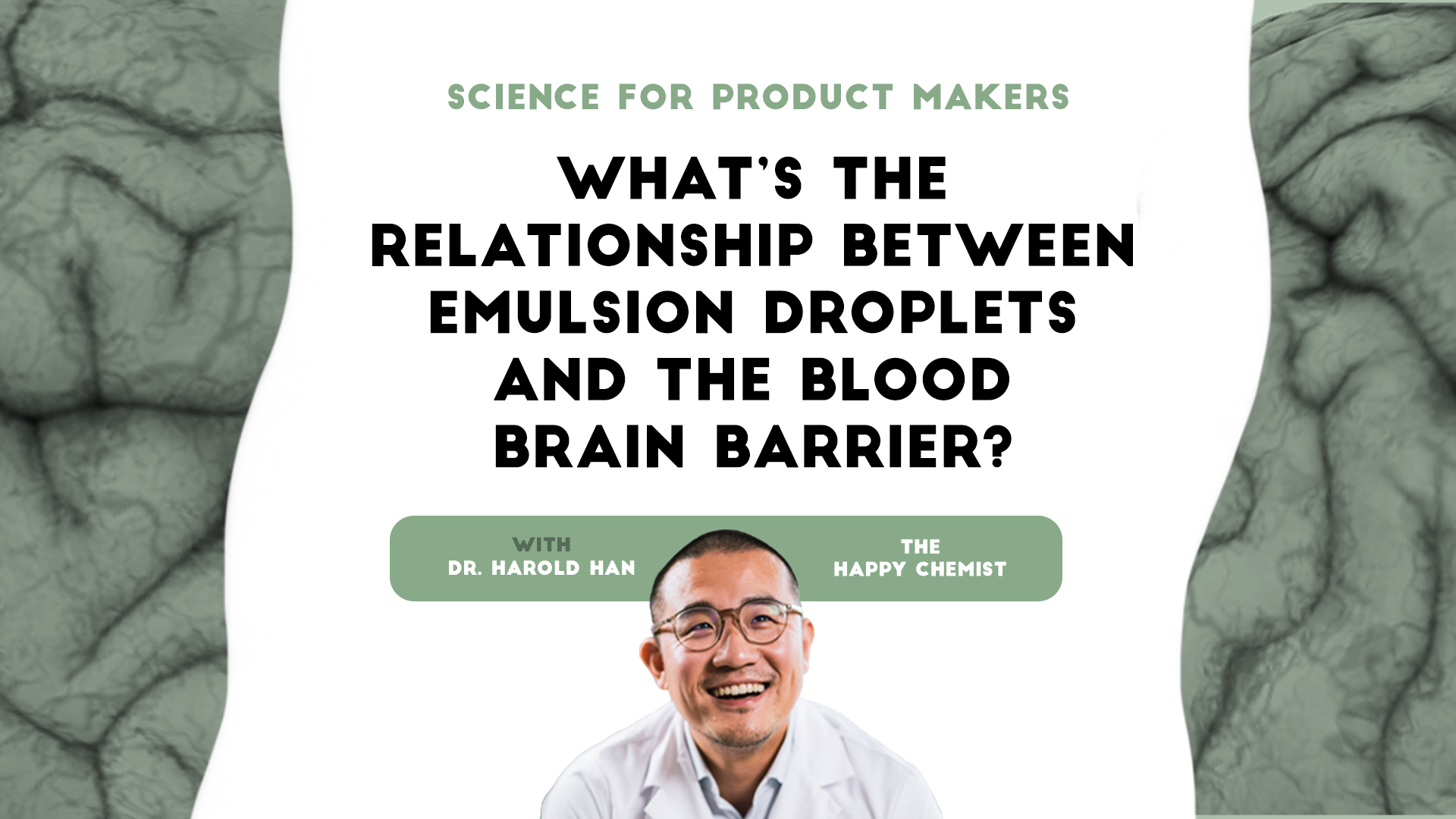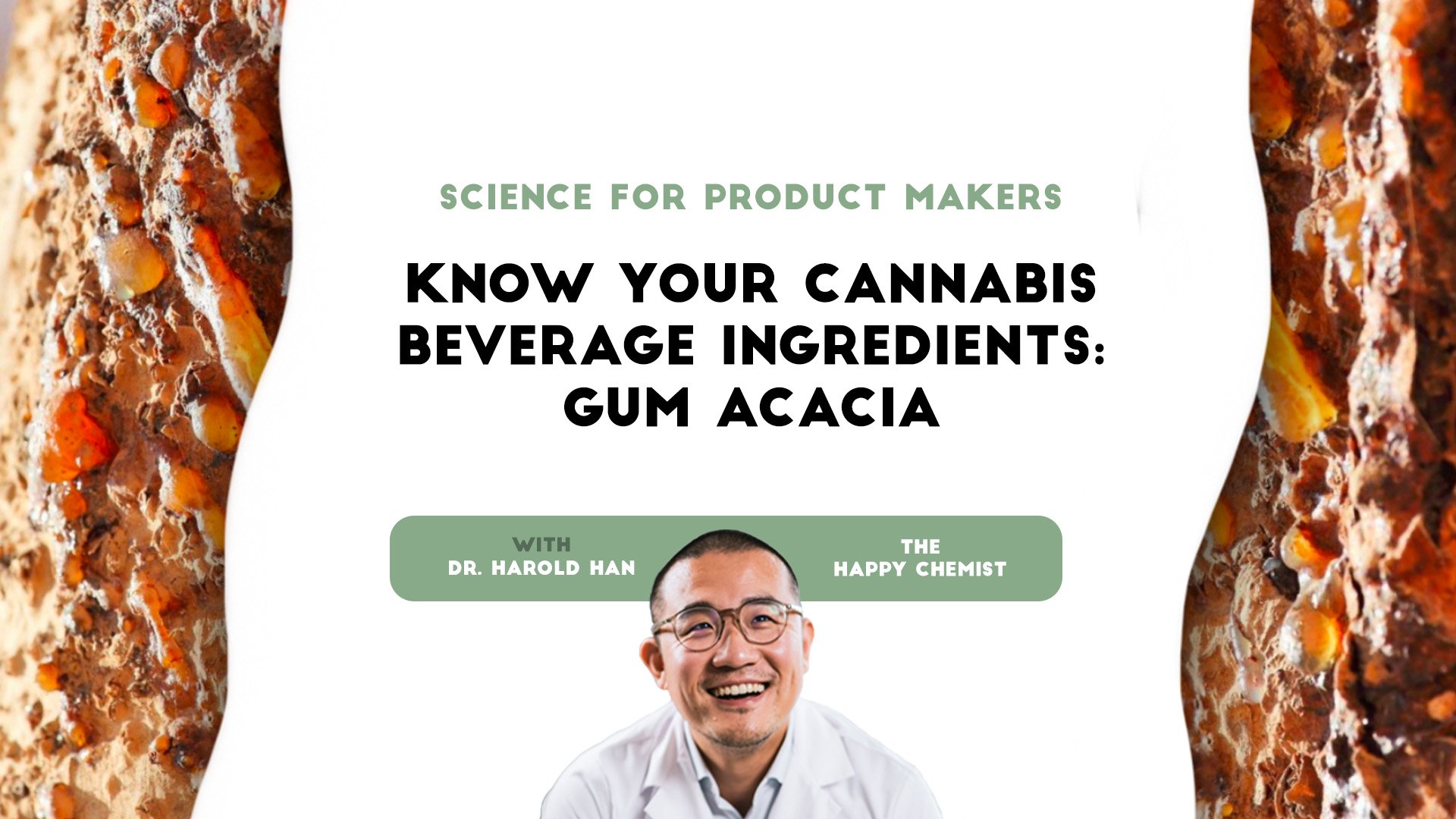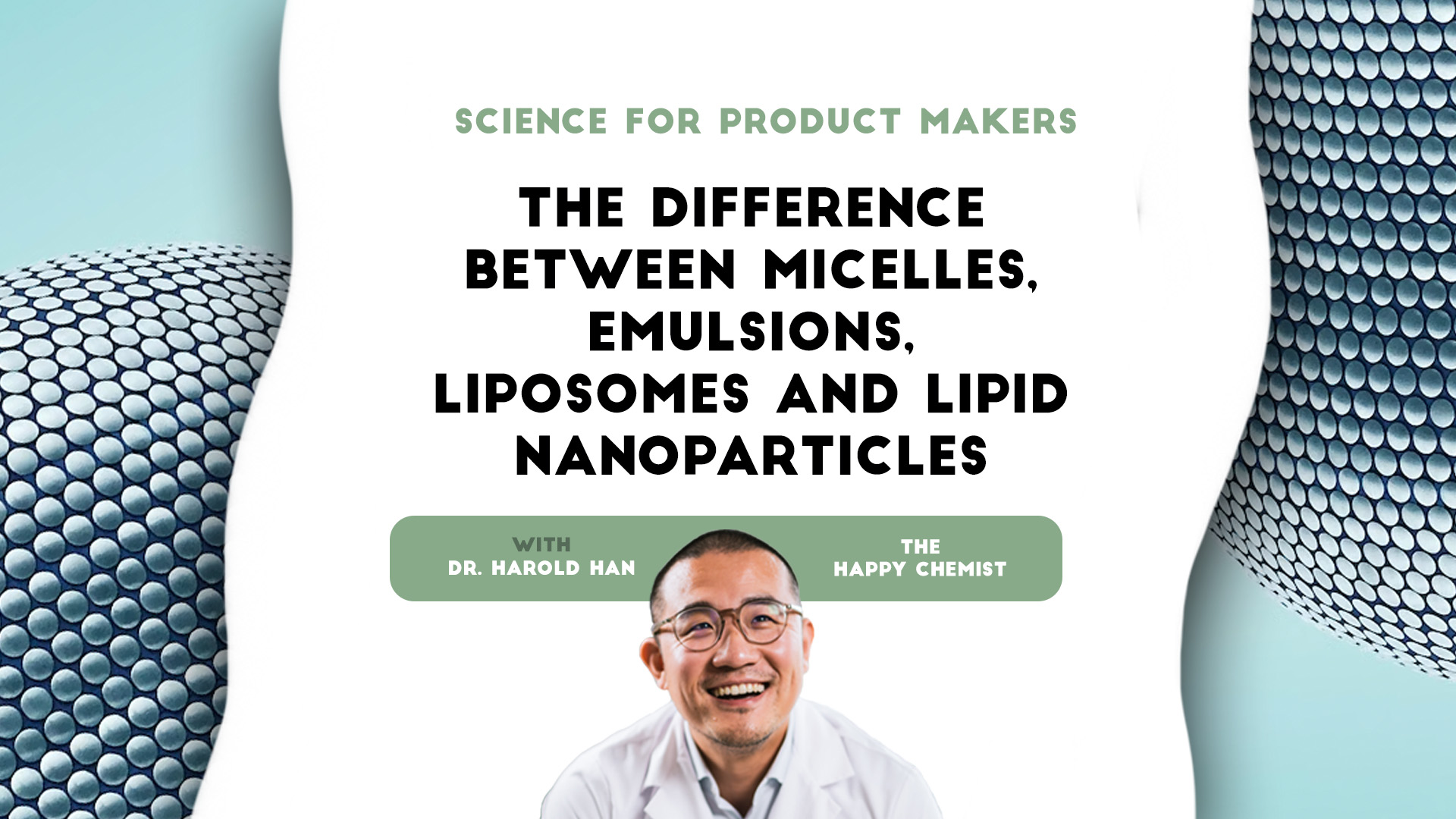Science for product makers: What is the relationship between emulsion droplets and the Blood Brain Barrier?
This post is also published as an article on Harold's LinkedIn profile. You can read and leave comments here.
3 min read
 Dr. Harold Han - "The Happy Chemist"
:
4/16/24 10:06 PM
Dr. Harold Han - "The Happy Chemist"
:
4/16/24 10:06 PM

This post is also published as an article on Harold's LinkedIn profile. You can read and leave comments here.
Have you wondered where the emulsifiers in a cannabis beverage end up in our body after consuming cannabis emulsion? Emulsifiers are key to the formation, stability, flavor and general experience of cannabis emulsions — and there are many kinds. For example, at Vertosa, we categorize emulsifiers as conventional, natural, and organic based on their origins.
I recently conducted a poll asking that same question and it seems our community is not only interested in this topic, but many believe emulsifiers can either be excreted and / or absorbed by our body, all depending on the emulsifier types. Let me explain why that is the correct answer.

After consuming a cannabis emulsion, the first thing that happens to the emulsifier is called displacement. During displacement, cannabis emulsion enters the small intestine and natural emulsifiers (bile salts and phospholipids) produced by our body come close to the cannabis emulsion droplet and replace the original emulsifiers (source).

After this, bile salts and phospholipids continue to transform emulsion droplets into mixed micelles while the emulsifiers from cannabis emulsion flow in their free molecular form throughout the small intestine. Their final fate depends on their chemical structures, some being absorbed by the body (that is, used as nutrition), and some expelled. Below is a quick rundown of what happens to the following emulsifiers: milk proteins, polysorbates, gum acacia and quillaja saponin.
Milk proteins, such as whey protein or caseinate, are usually digested by the enzyme called proteases into the form of peptides and amino acids that can be completely absorbed by the body.
Polysorbates are made up of two distinctive units — fatty acids and ethoxylated sorbitan — connected by an ester bond. Ethoxylated sorbitan contains polyethylene glycol (PEG), which is derived from petroleum chemistry. When polysorbates get displaced from the emulsion droplets, some of them may be incorporated back into the mixed micelles, and thus get absorbed into the body; some of them may have their ester bonds broken by enzymes such as lipases, allowing fatty acids to be absorbed by the body. The PEG, however, can be more complex: when PEG’s size is small (molecular weight < 1000, such as in Polysorbate), it’s partially excreted and partially metabolized. As PEG’s molecular weight grows, it takes much longer for our body to get rid of it, which may cause PEG accumulation if consumed chronically (source).
Gum acacia is extracted from acacia trees that are mostly grown in northern part of Africa. Gum acacia is a large dietary fiber molecule that cannot be digested and absorbed but directly goes to the colon where it is fermented by the gut microbiome or excreted in the stool. Acacia fiber is known to be an excellent prebiotic that ferments in the intestines, promoting colon health (source).
Quillaja [Kee-Lai-A] saponin is extracted from soapbark, an endemic tree found in the Mediterranean region of Chile. Quillaja is a complex and beautiful cocktail containing many beneficial natural compounds such as saponins, terpenes and polyphenols. Preclinical data demonstrated that quillaja saponin is metabolized extensively in the gastrointestinal tract by the intestinal microflora, where the metabolites partially get absorbed and partially excreted by the body (source). Other than being an efficient emulsifier, quillaja saponin also shows promising properties in anti-irritation, antimicrobial and immuno-stimulation (source). Studies also show quillaja saponin can reduce the solubility of cholesterol thus helping control cholesterol intake (source).
This knowledge helps us evaluate the risks and benefits of consuming products infused by cannabis emulsions on a regular basis. For example, PEG (especially at high molecular weight) can pose a risk of accumulation. That is why the FDA clearly stipulates the upper limit usage level for emulsifiers containing PEG. Emulsifiers like quillaja saponin and gum acacia are considered much safer with additional health benefits.
As the applications of cannabis emulsion become more popular, there’s been a lot of questions about the blood brain barrier (BBB). What happens to emulsifiers if they pass through it instead of the other filters in the body? In my next post, I’ll explore the relationship between emulsion droplets and the blood brain barrier — so stay tuned!
Dr. Harold Han — the “Happy Chemist” — combines his storied background in emulsion chemistry and science with curiosity and fascination in the rapidly growing cannabis industry. Developing nano and micro emulsions his entire career, Harold holds a Ph.D in Surface Chemistry from NYU and is the inventor of multiple patents in emulsion chemistry.
As the Chief Science Officer at Vertosa, Harold spearheads the company’s development of industry-leading and customized active ingredients for infused product makers, offering pre-suspended aqueous solutions to create incredibly homogenous and stable products while maximizing bioavailability, clarity, and taste.
To learn more about the science of cannabis, check out Harold’s Happy Chemist videos.

This post is also published as an article on Harold's LinkedIn profile. You can read and leave comments here.

This post is also published as an article on Harold's LinkedIn profile. You can read and leave comments here.

This post is also published as an article on Harold's LinkedIn profile. You can read and leave comments here.